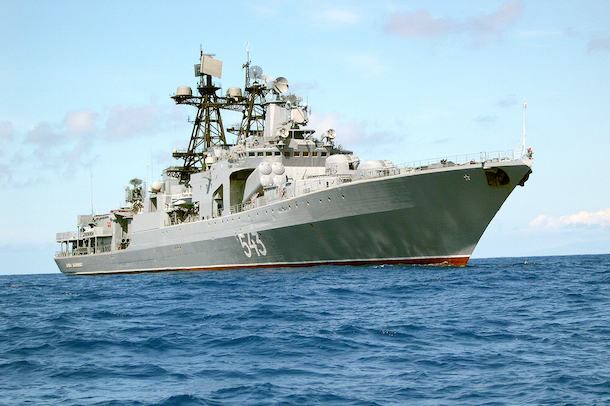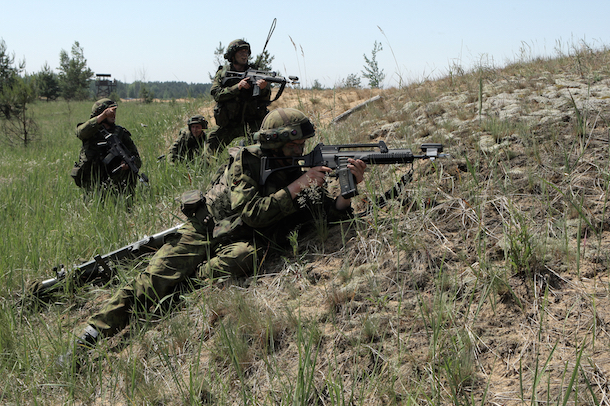
‘A Year of Friendship’ for Russia and North Korea
In a move to further increase rapprochement between Russia and North Korea, both countries have declared 2015 a “year of friendship.” The close relationship between both countries is most likely due to United Nations sanctions. These sanctions are based on Russia’s proxy war—including the annexation of Crimea with the help of pro-Russian militants—against Ukraine in the Eastern Oblast of Donetsk and Luhansk. The fact that Russia is also currently militarizing their Arctic region as well as threatening the Baltic States and stationing more troops on Norway’s borders is a clear sign of Putin expansionist policies.
Russia is also turning eastward to set up new economic ties due to the sanctions imposed by the West. Last year, Russia signed a $400 billion deal with China to supply gas for the next 30 years. The deal will send more than 30 billion cubic meters of gas annually from West Siberia to China.
As for North Korea, sanctions are mostly imposed due to underground nuclear testing in 2013 and subsequent missile launches. North Korea has also vowed to retaliate against the United States’ pressure on the United Nations for more severe sanctions. North Korea’s allies list is thin and Russia seems to be in the same situation—a clear sign of a future friendship.

Recently, President Putin sent an invitation to Kim Jong-Un to visit Russia. A North Korea’s leaders last visit to Russia was in 2011 when Kim Jong-il visited in his armoured train. Both he and then Russian President Dmitry Medvedev met on this rare trip outside North Korea. North Korea is also placing a lot of hope in this “year of friendship” mostly due to the slow deterioration of its relations with China—giving North Korea no choice but to keep a good relationship with Moscow.
Russia has also confirmed that it will erase $10 billion of North Korea’s $11 billion debt. The other $1 billion will be reinvested in the country. Moscow—through investors—will also invest $25 billion in North Korea’s railway while additional funds will go to basic infrastructure.
North Korea’s power grid will also be rebuilt by Russian companies while both countries will invest in the North Korean ice-free port of Rason for future Russian coal importation.
Having said that, Russia’s intentions to spend this $25 billion to restore the country’s railways comes with a condition: North Korea will give access to its mineral resources to Russian investors.
Military Cooperation
The military alliance between both countries is really concerning. A series of military exercises have been planned for 2015. The army, navy and airforce joint exercises will most likely be conducted in Russia. There is a good chance that Arctic training will be conducted while North Korean ships execute naval drills with the Russian Pacific Fleet in the Sea of Okhotsk.

The series of joint military exercises could also give Russia the chance of showcasing new equipment that could see service in North Korea. In 2002, Kim Jong-il tried to buy Russian Sukhoi Su-35 but the project was cancelled. However, Kim Jong-Un sent an envoy to Russia in November 2014 to revive the project. In fact, North Korea is interested in buying at least 36 Su-35 Flanker-E.
The Sukhoi Su-35 multirole fighter is the most advanced fighter aircraft in the Russian Air Force. The 4th generation fighter can reach a speed of Mach 2.25 and has a service ceiling of 59,100 ft. Its payload is impressive and it can also drop 1,100 lb. unguided bombs.
There is also a possibility that nuclear weapons will be discussed. In fact, I wouldn’t be surprised if Russia’s intentions are to provide North Korea with more means to produce Intercontinental ballistic missiles (ICBM).
It is in Russia’s favor to supply the North Korean military with advanced weaponry—it keeps the Americans busy in South Korea and Japan. With North Korea as an ally, Russian influence in the region is also possible.
Eastern Flank Security
With China slowing joining the equation, Russia can protect its Eastern flank while filling its treasury with the $400 billion gas deal. With the Eastern flank “secured,” Russia will have the ability to focus on its probable next target; the Baltic States.

As a proof of Russia’s aggressive stance towards the Baltic States, Lithuania is currently reintroducing a 9 months draft for men age 19 to 26. However, the 3 Baltic States countries are part of NATO thus giving them the power to call in Article 5. Lithuania is an obstacle between the Russian mainland and the Kalinigrad Oblast where vital military installations have been built. The Voronezh Radar installation is crucial for the Russian land-based early warning system.
Nevertheless, there is a very low chance that the Baltic States will be invaded by Russian forces. For example, only about 6% of the Lithuanian population are Russians, making it hard for Russia to justify an intervention.
2015 could be a turning point for the Russia-North Korea relationship. It will most likely bring them closer and it will doubtlessly benefit the Russian defense industry.
